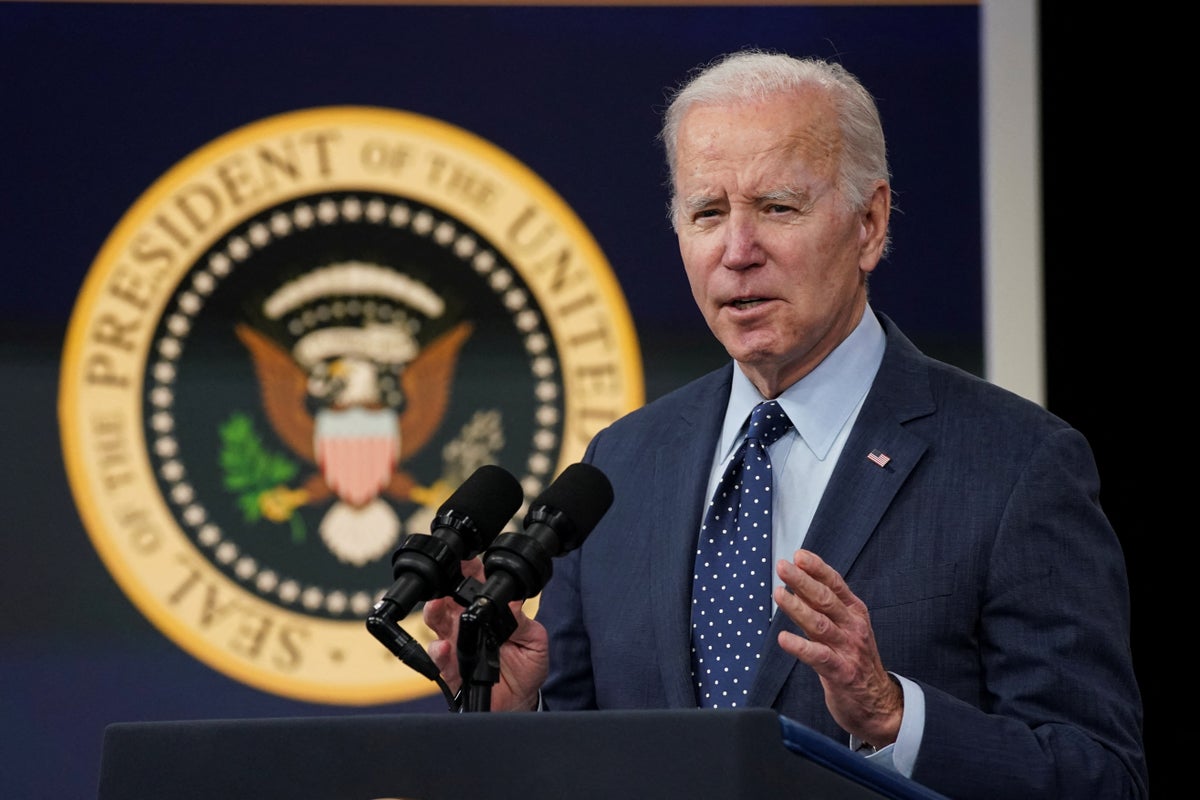
President Joe Biden said the trio of objects shot down by US fighters over the last week were most likely “balloons tied to private companies, recreation or research institutions” and not linked to the Chinese espionage program responsible for a larger airship that traveled through US airspace earlier this month.
Speaking from the White House on Thursday, Mr Biden said US and Canadian forces “acted in accordance with established parameters for determining how to deal with and fight aerial objects in US airspace” and recommended that the objects be shot down. He said he heeded the recommendations and ordered them downed “due to hazards to civilian commercial air traffic, and because we could not rule out the surveillance risk of sensitive facilities”.
“Our military and the Canadian military are seeking to recover the debris so we can learn more about these three objects. Our intelligence committee is still assessing all three incidences. They're reporting to me daily and will continue the urgent efforts to do so and I will communicate that to the Congress. We don't yet know exactly what these three objects were. But nothing right now suggests they were related to China's spy balloon program, or they were surveillance vehicles from any other country,” he said.
Mr Biden said the US intelligence community has currently assessed that the objects were probably research, recreation, or commercial craft.
“We know that a range of entities including countries, companies or research organisations, operate objects at altitudes for purposes that are not nefarious, including legitimate scientific research,” he said, adding later that the US has no evidence that there has been any recent “sudden increase” in aerial objects such as the ones shot down last week.
He explained that the US and Canadian defence forces are most likely seeing more such objects because of steps taken to increase the sensitivity of radar systems after the appearance of the Chinese espionage airship over the US earlier this month. He also said the US will “keep adapting our approach to dealing with these challenges”.
“That's why I've directed my team to come back to me with sharper rules for how we will deal with these unidentified objects moving forward, distinguishing between those that are likely to pose safety and security risks that necessitate action and those that do not. But make no mistake: If any object presents a threat to the safety or security of the American people, I will take it down,” he said.
The president said his administration would share those new rules – which will remain classified – with Congress, and stressed that the rules would guide future actions taken “while responding to unmanned and unidentified aerial objects”.
Mr Biden’s remarks came after days of calls from both Republicans and Democrats in Congress for the president to address the American people about the “objects” shot down over US airspace, with some critics offering complaints that the three shootdowns subsequent to the downing of the Chinese airship were overreactions.
But in an interview with NBC News shortly after he finished speaking, he stressed that he gave the order to down those objects after receiving military advice.
"I got a recommendation from the military," he said. He added that it would’ve been easier not to shoot them down because of political pressure, and he said he plans to talk with Chinese President Xi Jinping in the near future, adding later that the “last thing” Mr Xi wants now is to “fundamentally rip the relationship with the United States and with me”.
In his public remarks, Mr Biden took pains to characterise the three objects still being analysed with the Chinese spy balloon that he ordered shot down by an F-22 fighter off the South Carolina coast.
That airship, he said, was permitted to traverse US airspace because the Defense Department was able to take action to keep it from gaining any useful intelligence from sensitive sites in its path.
He stressed that the delay in shooting it down came on advice from Pentagon officials who advised that letting it continue over land would allow it to be shot down over water, which would make it easier for the US to recover and analyse recovered debris.
“The military advised against shooting it down over land because of the sheer size of it. It was the size of multiple school buses and posed a risk to people on the ground if it were shot down where people lived. Instead, we tracked it closely. We analyze its capabilities, and we learned more about how it operates. And because we knew its path, we were able to protect sensitive sites against collection. We waited until it was safely over water, which would not only protect civilians, but also enable us to recover substantial components ... for further analytics, and then we shot it down, sending a clear message ... that violation of our sovereignty is unacceptable,” he said.







